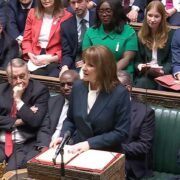English universities in “relatively positive” position despite COVID-19
- A new analysis finds that the impact of the pandemic on English universities is “not as severe as was first feared”
- A combination of prudent financial management and continued international student recruitment leaves most universities poised for recovery in 2021
- Despite uncertainty in near-term forecasts, the OfS does not expect a large number of institutions to close
The Office for Students (OfS), the independent regulator of higher education in England, has published its analysis of financial data returned by higher education providers in England at the end of October 2020. The exercise is considered part of an “interim financial data return,” and at this point, the data show that on the whole, the financial position of universities and colleges in England is sound despite the effects of COVID-19.
OfS notes that their analysis “provides the first opportunity to analyse the impact of the pandemic on English higher education…There continues to be significant variability between the financial performance of individual providers. Despite this, the likelihood of multiple providers exiting the sector in a disorderly way due to financial failure is low at this time.”
Carrying strong fundamentals into 2021
The higher education institutions were asked to provide details of their financial position in 2019/20 and to forecast their position in 2020/21 – relative to the full academic year before the pandemic (2018/19).
Universities and colleges forecast that revenues generated from international student enrolments will be lower in 2020/21 than they were this year, but higher than they were in 2018/19 – a remarkable feat if the forecast holds.

“Fee income from overseas students remains an important part of the financial model of the higher education sector in England,” notes the study report. Total non-EU tuition revenue was reported at £6.0 billion in 2019/20, for a year-over-year increase of 16.4%. Collectively, English universities expect non-EU revenues to fall by 10.4% (or roughly £700 million) in 2020/21.
OfS notes that this sign of resilience is due to institutions having managed finances well and controlled costs. While borrowing increased by roughly 5% this year, this is considered reasonable under the rather extreme circumstances of the pandemic. OfS notes that some universities have secured further loans but have not yet used them, which offers more evidence of a prudent approach.
In addition, there was also more international student recruiting than expected – again a sign of calm heads in the face of the storm brought on by COVID-19. Just last month in the US, NAFSA urged American universities not to scale back their international outreach as a response to declining enrolments and generally tough circumstances – a main reason being that doing so would weaken the US’s competitive position.
Commenting on the OfS findings, Nicola Dandridge, chief executive of the Office for Students, said:
“There are many reasons for this relatively positive picture. Universities entered the pandemic in reasonably robust shape. England continues to be a popular destination for international students. And universities have been able to access significant support from the government, including via access to government-backed loans. All of this means that English higher education finds itself in reasonable financial shape, and the grave predictions of dozens of university closures have not materialised.”
Looking ahead
Despite the overall stability of the sector, there are of course some institutions that are struggling more than others, but OfS does not believe that next year will see a large number of them fail financially. They judge that to be a low risk, but at the same time, they note that the next months are uncertain:
“Issues that could impact on income include higher numbers of students dropping out, reduced income from accommodation and conference facilities or impact of COVID-19 restrictions.”
Indeed, the reporting institutions based their forecasts on an assumption that international students, once enrolled, would be able to be retained – not a sure thing so far during COVID-19.
The Brexit process, now very much in its final stages, is another significant feature of the near-term outlook for English institutions. The report notes that, “2020-21 is the final year that EU students can enter English higher education providers on the same fee and financial support terms as UK students. Aggregate EU tuition fee income has gradually declined since the 2016 referendum and in the run up to the UK’s exit from the EU. The detail of the UK’s future relationship with the EU will also have currently uncertain implications for other EU-related activities of the English higher education sector.”
Ms Dandridge added,
“There are a number of uncertainties which will continue to affect finances both now and into the future, not least the fact that it is still not clear what the overall impact of the pandemic will be. Where universities have immediate concerns about their finances, they must let us know straight away. The OfS will work constructively with any university in financial difficulties, with our overarching priority being to protect the interests of students. At this point in time, though, we believe that the likelihood of significant numbers of universities or other higher education providers failing is low.”
For additional background please see:
















